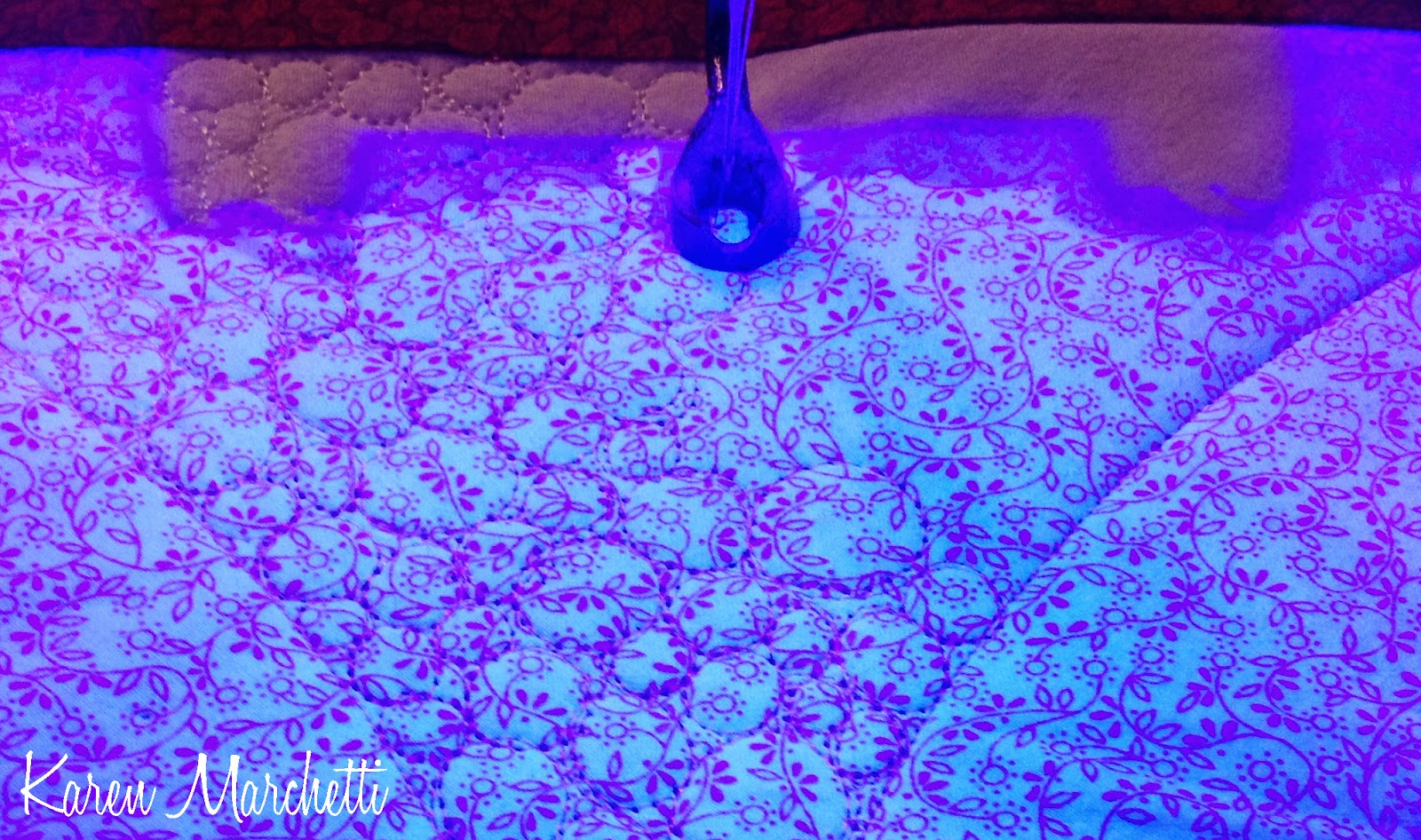Let me explain just a bit more. Fabrics are tricky, when you add similar colored thread quilting on them can become even more tricky. I use the black light feature on my Gammill a lot. I also use no light at all, a lot. One time while demo quilting at a show the following happened (I was quilting on a silver dupioni):
Someone said "You're quilting with no light on"
I said "yes, I know"
Someone said "here, let me turn it on for you""
I said "no, really, I'm fine"
Someone proceeded to turn the light on while I was quilting
I again turned it off
Many people don't realize how awesome it is to have the ability to switch between bright light, black light, and no light. In this post I will share a couple of examples - one with white fabric with silver markings and another with cream fabric with white paint pattern.
Let's begin with the white fabric and silver markings. I think I've shared these before - possibly on the other blog - but they are important for this post so I'm re-sharing (too much information is never an issue):
Here is bright light (the way most people stitch):
But look at the amazing thing that happens if you flip on your black light:
WOW, right? You are now quilting away. One thing to remember - if your studio has a million windows and you're trying to quilt during the brightest time of day, the black light won't be as effective. I happen to stitch late afternoon and evenings, so using my black light is always extremely effective - it glows like crazy. No worries, your black light will still work in a bright studio, the glow just won't be as extreme as in this photo - although your eyes will still benefit greatly.
The next example is the cream colored fabric with the painted white design. In this case I quilt using no light other than the rooms ceiling light, here's why:
With the bright light on:
You can see the stitches, but quilting like this would hurt your eyes after a while.
Here is the black light:
What?!! Not what you were expecting? Crazy isn't it? You can't see a thing to quilt.
But, if you shut the light out and only use the room light, an amazing thing happens. You can see perfectly as you're using the shadows of your stitches:
I could go on and on with different examples of how light plays a big role in your quilting and your ability to see the thread on the fabric. If you're having issues, play around with your lights -- you might be surprised!






Thanks Karen. Great information.
ReplyDeleteanother thing I do when lighting is difficult is take a clip light and angle it sideways across the quilt. It illuminates the texture rather than the area you are stitching. Works well!
ReplyDeleteWow, that makes a lot of sense! Thanks for sharing!
ReplyDeleteI used to help a dog breeder friend with her puppies. Driving back and forth between our homes meant driving the back roads late at night. At first I used my high beams but later found I could see better with my regular headlights. I don't think people give their eyes a chance to work as they were meant to. They are an amazing thing if you just give them a chance.
ReplyDeleteLove these tips Karen! Thank you for sharing!
ReplyDelete